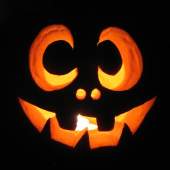Mushrooms

“A dish of mushrooms changed the destiny of Europe.”
--French philosopher Voltaire, on the Holy Roman Emperor Charles VI, rumored to have died after eating poisonous mushrooms
“[The Caterpillar] got down off the mushroom, and crawled away in the grass, merely remarking as it went, ‘One side will make you grow taller, and the other side will make you grow shorter.’
‘One side of what? The other side of what?’ thought Alice to herself.
‘Of the mushroom,’ said the Caterpillar.”
--Lewis Carroll, Alice’s Adventures in Wonderland
What is by turns a prized delicacy, a dangerous hazard, and a hallucinogen all rolled into one?
Next Tuesday, April 16, is The Day of the Mushroom, celebrating a culinary staple that has been with us since prehistoric times. Its history is clouded in mystery and rife with confusion and controversy, but one thing is clear: there are probably few foods that have inspired as much fealty and fear, and have been used in so many ways.
Nobody is sure when mushrooms – also known as toadstools – were first discovered (and which intrepid soul was the first to try incorporating them into his or her diet), but what is known is that the ancient Egyptians, Greeks, and Romans recognized their value quickly, considering them “food of the gods”; for centuries, consumption of them was restricted to royalty and the elite. At roughly the same time, there is evidence that mushrooms had already spread to Europe, and to Central and South America – understandable when you consider that one fully ripe mushroom can disseminate more than 15 billion spores.
Mushrooms didn’t really take off in North America until the late 19th century. Prior to that, because they could be tricky to cultivate in kitchen gardens and tended to be pricey in stores, home cooks steered clear of them, and they were enjoyed mostly in restaurants. Later, as cultivation methods evolved, mushrooms became a popular ingredient in soups, sauces, and condiments.
There are more than 200 varieties of mushrooms – here’s a rundown from Epicurious of some of the most popular, what they look like, and how they are most commonly used. These range from the most commonly consumed “white button” mushroom, the decadent truffle, and the large, “meaty” Portobello variety that is giving grilled hamburgers a run for their money.
As most of us were taught as children, some wild mushroom varieties (including the aptly named “death cap” mushrooms, or amanita phalloides) can be highly toxic, causing liver damage and other organ failure when consumed. Anyone attempting to forage wild mushrooms would be wise to consult with a mycologist (fungi expert), as appearances can be deceiving.
On the plus side, the “safe” mushrooms have significant nutritional benefits – they are a great source of potassium, B vitamins, fiber, and protein, and can boost the immune system while being extremely low in sodium, cholesterol, carbohydrates, and fat. They have been used in traditional Chinese medicine for centuries to treat numerous conditions, including high blood pressure, blood sugar imbalance, and some kinds of cancer.
There is, as you have probably heard, another variety known as “psilocybin” or “magic mushrooms” that can cause hallucinations when ingested. For centuries, these have been used in religious rituals; the Aztecs in particular believed consuming these mushrooms brought them closer to God. This form of “pagan worship” didn’t sit well with the Portuguese and Spanish invaders who swept in during the 1500s to convert everyone to Christianity, so the use of them was effectively tamped down for a time. The first documented instance of a hallucinogenic occurrence in Europe appears to have occurred in 1799, when a London man unknowingly brought home some psilocybin mushrooms for a family dinner. That must have been a memorable evening!
Other fun facts:
- The name “mushroom” is likely derived from mousseron, a French term from the 1400s meaning “moss.”
- Mushrooms are often mistakenly lumped in with vegetables, but they were officially classified as a fungus in the 1960s, in the same category as molds, rusts, and yeasts. (In truth, as mushrooms take in oxygen, expel carbon dioxide, and produce vitamin D in sunlight, they are actually closer to animals than plants.)
- China produces 50-70% of the world’s mushroom crop. The United States is second, and the Netherlands is third.
- Afraid of mushrooms? You might suffer from mycophobia. Conversely, if you’re a fan, consider yourself a mycophile.
- Americans, per capita, consume about four pounds of mushrooms annually.
- There are some varieties of mushrooms that glow in the dark. They are called bioluminescent mushrooms, and there are more than 80 species of them; some can be found only in the Brazilian rainforest.
- Before synthetic fabric dyes came on the scene, mushroom dyes were used – they were organic and produced strong, bright colors.
- Cream of mushroom soup is not only popular on its own, but is a versatile ingredient in recipes – especially that perennial holiday favorite, green bean casserole.
- It is rumored that author Lewis Carroll was sampling some hallucinatory mushrooms when he wrote Alice’s Adventures in Wonderland, and it was that experience that inspired him to create the hookah-smoking Caterpillar on his own “magic mushroom.” And you thought Victorians were dull.





